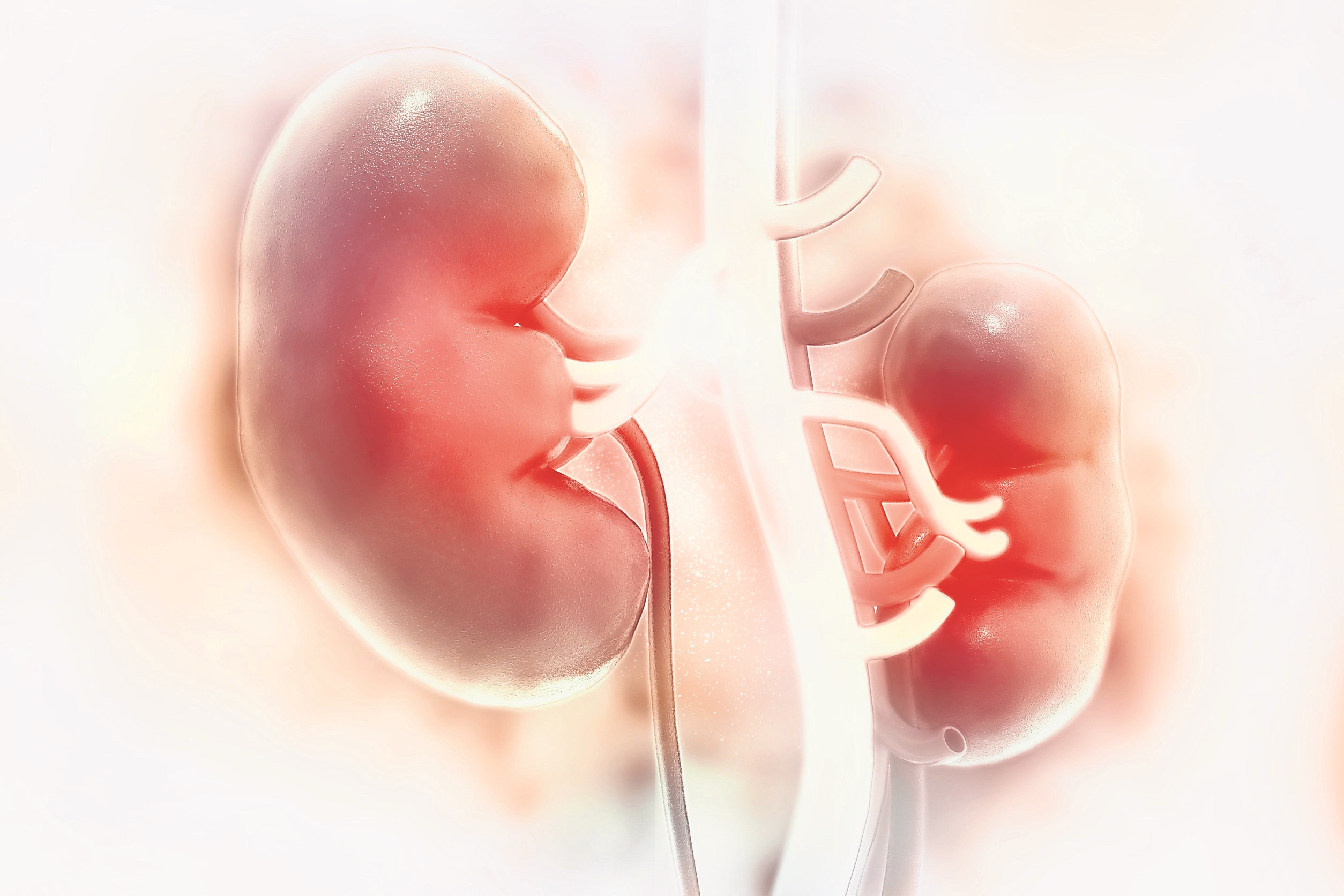[Kidney Transplant Special Topic]Get rid of dialysis treatment three times a week…
[ad_1]
Text: ◇ Yang Qianni Edited by: Liang Yingxiu
(Kuala Lumpur News) Compared with dialysis patients, after receiving kidney transplant, patients have better survival rate and quality of life. In addition to no longer being bound by dialysis treatment three times a week or four times a day, after the first year The cost will also be reduced.
There are two sources of transplanted kidneys, namely living donors and gross donors, and the former has more advantages.
Chronic Kidney Disease (CKD) is still a serious national health problem, mainly caused by diabetes and hypertension. According to a 2018 study, the prevalence rate of CKD in my country is 15.48%. However, the CKD we see is actually just the tip of the iceberg. This is because the early symptoms are not obvious and are often difficult to detect.
End-stage patients must undergo lifelong kidney dialysis
Dr Nor Fadhlina Zakaria, Consultant at the Department of Nephrology at Hospital Serdang, pointed out that when a person suffers from CKD, kidney function will gradually decline over time, which cannot be reversed or cured.
“The estimated Glomerular Filtration Rate (eGFR) is used as an evaluation index of patients’ renal function, which is divided into 5 stages. When renal function is severely damaged and unable to meet the body’s daily needs (the body’s waste and toxins are well removed Excreted), these patients with Stage V or End-Stage Kidney Disease (ESKD) have no choice but to undergo lifelong dialysis treatment (commonly known as kidney dialysis) or wait for a kidney transplant.”
For patients, the best treatment is kidney transplantation, which is what she has always emphasized. Ideally all patients, regardless of age or background, would ideally be eligible for a kidney transplant, but the reality is that not everyone is lucky enough to find a matching kidney donor.
She said that the destination of all patients is the same, which is to prolong life and live a normal life as much as possible, but they differ in the choice of “transportation tools.” “If you are able and qualified to buy a BMW (kidney transplant), of course we have to choose the best way. If you can’t choose a BMW, we can settle for a domestic car (dialysis treatment).”
Experts have found that kidney transplant patients have better long-term survival rates than those receiving dialysis.
Dr. Nofarina
“A 2003 study in Kidney International showed that the five-year survival rate for kidney transplant patients was 88%, compared with 52% for dialysis patients, and she believes the data are getting better now.
Since the transplanted kidney can maintain the normal functioning of the body, patients no longer need dialysis treatments 3 times a week or 4 times a day, and can enjoy a nearly normal life including exercise, and have fewer dietary adjustments and restrictions on what they can eat. Durian etc. „
“In addition, the cost of kidney transplantation will be cheaper than dialysis treatment after the first year. The pregnancy rate of women who undergo long-term kidney dialysis is very low, but they can get pregnant normally after receiving kidney transplantation. Of course, this will take a while, when the body has matured. It is more appropriate to receive a new organ and require fewer anti-rejection drugs.”
Whenever transplantation is mentioned, it means that surgery is required, so there are risks, and life-long medication is required to prevent rejection of the transplanted organ, which can also cause some side effects. However, you have to take the same medications as you do with dialysis, so it won’t make a big difference.
Raise public awareness of organ donation
“That said, I’m not saying that dialysis is not a good treatment, it’s just that it’s not as good as a transplant.”
“I believe that dialysis treatment is a ‘bridging therapy’ between conservative treatment and kidney transplantation. It can replace part of the kidney function and remove excess waste, toxins and water from the body.”
There are currently two methods: “water-washing” peritoneal dialysis (PD) and “blood-washing” hemodialysis (Haemodialysis, HD). The former can be performed at home, 3 to 5 times a day, and a fluid change time is 30 minutes; the latter needs to go to the dialysis center three times a week to receive 4 hours of dialysis treatment.
She believes that PD is the next best option after kidney transplantation, and HD should be considered last because PD uses the patient’s own peritoneal membrane as a filter, requires only minor surgery to implant a catheter, and has fewer dietary restrictions than HD. In addition, patients can also undergo dialysis at night while sleeping through automated peritoneal dialysis (APD). “
According to the 2018 Malaysian Dialysis and Transplant Registry (MDTR) report, the number of kidney failure patients requiring dialysis treatment is increasing every year, but the kidney transplant rate has not increased accordingly. That year, 8,431 new patients required dialysis treatment, bringing the total to more than 44,000 across the country, and only 80 people received kidney transplants.
Therefore, she hopes to raise public awareness of organ transplantation and donation. If you have family or friends with kidney failure, you can come forward to help them and give them a new normal life.

Don’t take out the bad ones
New kidney transplant lower abdomen
Kidney transplantation is a surgical procedure in which a healthy kidney from a donor is transplanted into a patient to replace the original non-functioning kidney and allow the patient to wean off dialysis.
Generally, kidney transplantation does not remove the patient’s original kidney, but transplants a new kidney into the lower abdomen and connects it to blood vessels.
There are two sources of kidney transplants – living donors and gross donors. Living-donor kidney transplants offer many advantages over large-body kidney transplants, including good kidney function, elective surgery (meaning better preoperative preparation and fewer complications), shorter wait times for transplants, and better survival rates. high.
Close relatives and spouses can donate living bodies
Associate Professor Ruslinda Mustafar, Consultant of the Department of Nephrology, pointed out that in our country, close relatives of the patient, including blood-related parents, children, brothers and sisters, as well as emotional spouses, can become living donors.
“As for third-degree relatives and above, unrelated citizens or non-citizens can also donate kidneys, provided they are approved by the Unrelated Transplant Approval Committee (UTAC).”
“Of course, not only does the doctor perform an operation immediately if someone is willing to donate a kidney, but both the kidney donor and the patient must undergo detailed examination and rejection risk assessment. In addition to testing ABO blood type, human leukocyte tissue antigen typing (HLA-typing), In addition to cross matching and related antibodies to detect whether the donor and recipient are compatible, kidney donors must also undergo psychological and mental status assessment and various health examinations, such as urine tests, electrocardiograms, and lung X-rays Examinations and abdominal ultrasounds, etc., to ensure there are no underlying conditions, are all for the care and safety of both parties.”
Give your loved ones a second chance
All in all, living donation is the “Rolls Royce” of kidney transplants, and doctors hope to see an increase in living organ transplants, not just from close relatives, but also from those who have an emotional connection to the patient, such as a spouse, friend or co-worker. , because kidney transplants from living donors have better patient outcomes and long-term survival. So, donate your organs to your loved ones and give them a second chance!



(Answer by Associate Professor Ruosilinda, Consultant Nephrology Department)
Question 1: Who cannot donate a kidney?
Answer 1: A living donor needs to undergo a comprehensive physical and mental examination. If he has health problems such as impaired kidney function, high blood pressure, diabetes or gestational diabetes, obesity (BMI higher than 35), chronic diseases and mental illness, he will be considered a donor. Cannot donate a kidney.
Kidney donation is less risky than car accidents
Question 2: Are there any risks in donating a kidney?
Answer 2: Any surgery involves certain risks, but the risks of kidney donation are quite low. Some people worry that they will die unexpectedly due to kidney donation. In fact, the chance is as low as people accidentally choking while eating, but people will not stop eating because of this, right? The concept is similar, with the risk of a car accident being higher in comparison.
It takes 3 to 6 weeks for a kidney transplant to start working
Question 3: How soon can I work after a kidney transplant?
Answer 3: After kidney transplantation, you need to rest for a period of time to allow the wound to heal and the body to adapt. If you plan to return to work, it is generally recommended to wait 3 to 6 weeks. There will also be some restrictions that require special attention.
Use contraception for at least 1 year after kidney transplant
Question 4: How soon can I have sex after a kidney transplant?
Answer 4: It is not recommended to have sex 4 to 6 weeks after transplantation, or before the wound is completely healed.
For female patients, after receiving a kidney transplant, menstrual periods will become regular and the chance of pregnancy will increase. Doctors will ask couples to use contraception for at least 1 year.

[ad_2]
Source link

![[Love Wants Sex Series 358]Find out the culprit and overcome psychogenic erectile dysfunction…](https://newsworldhealth.com/wp-content/uploads/2023/01/News-World-Health-China.png)

